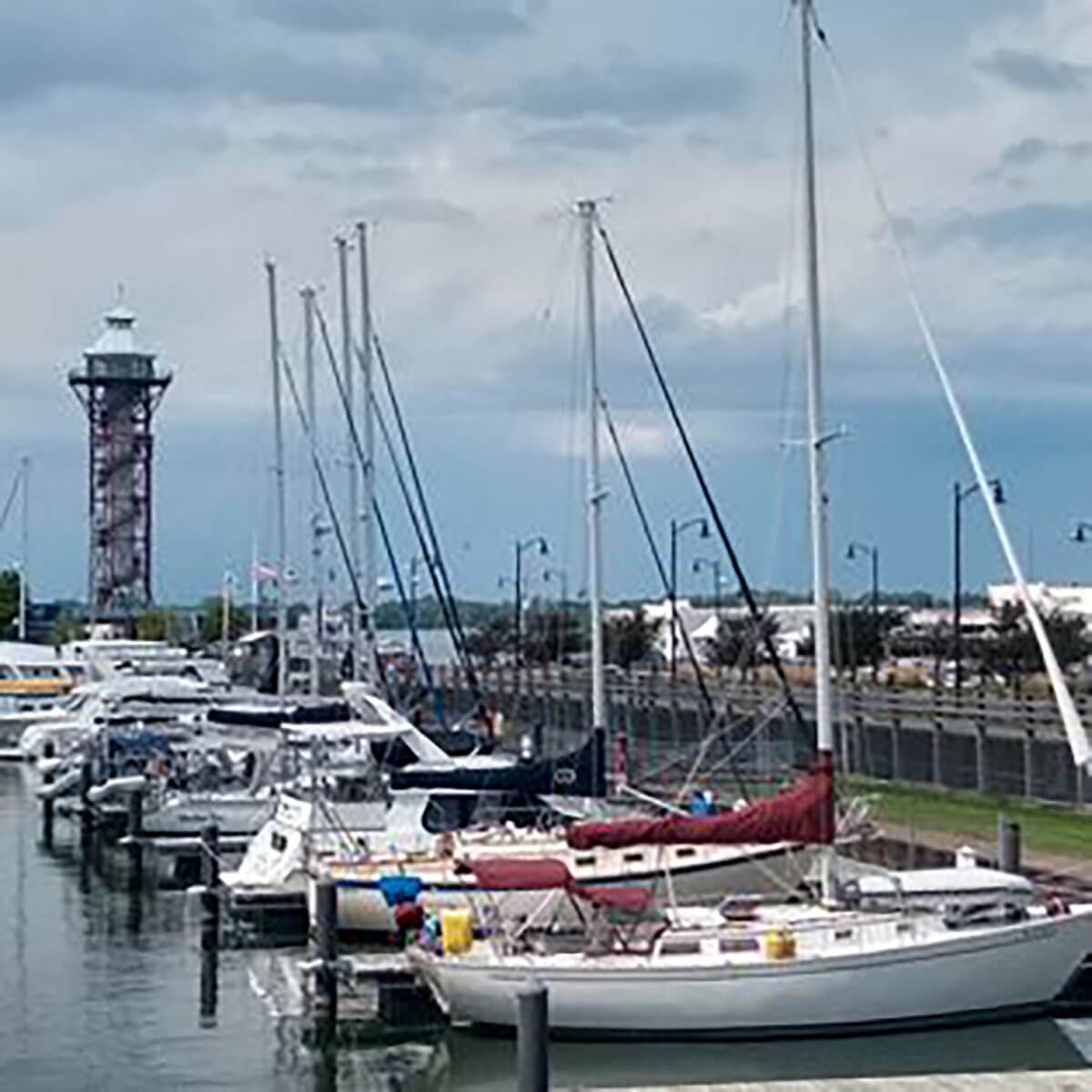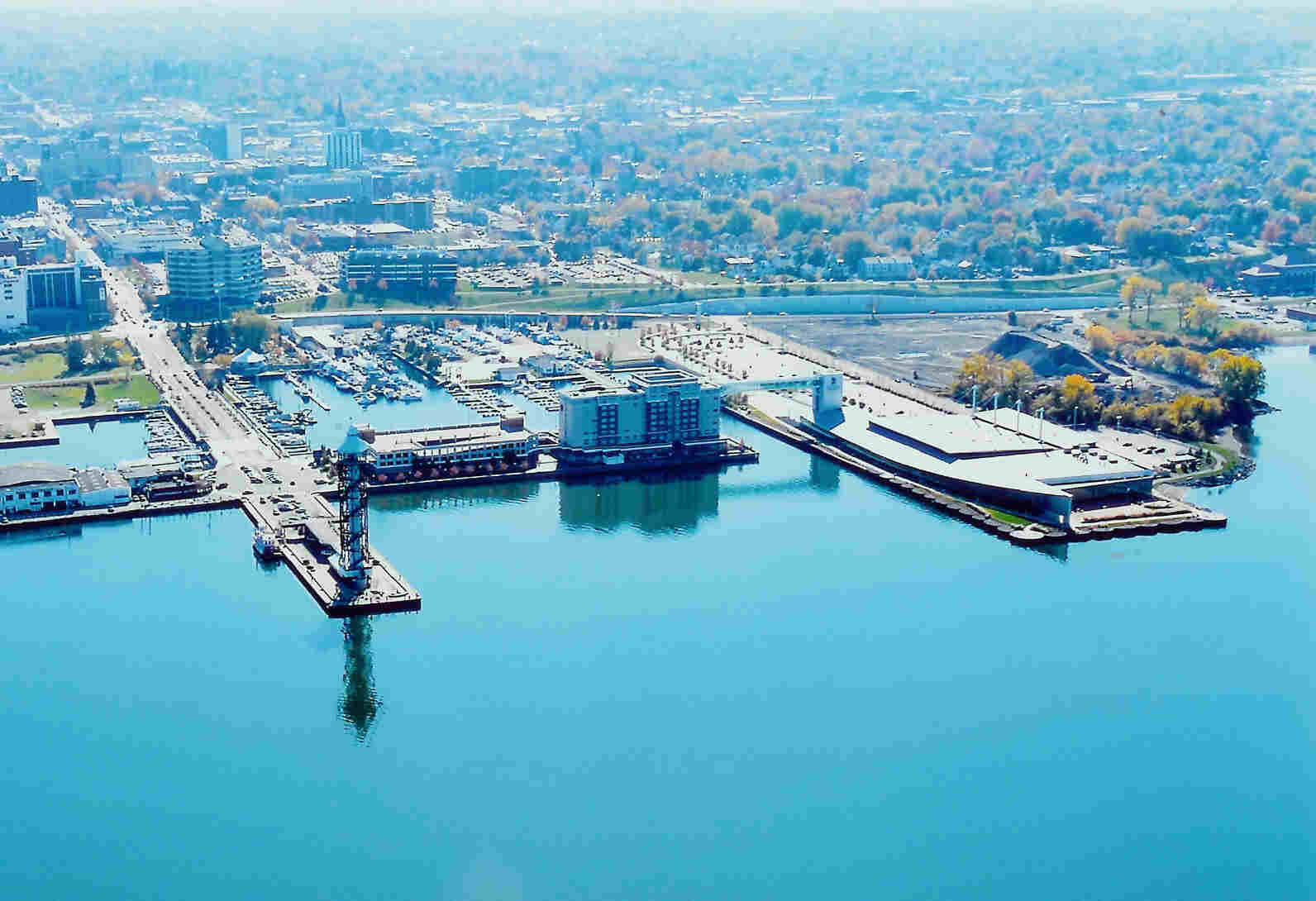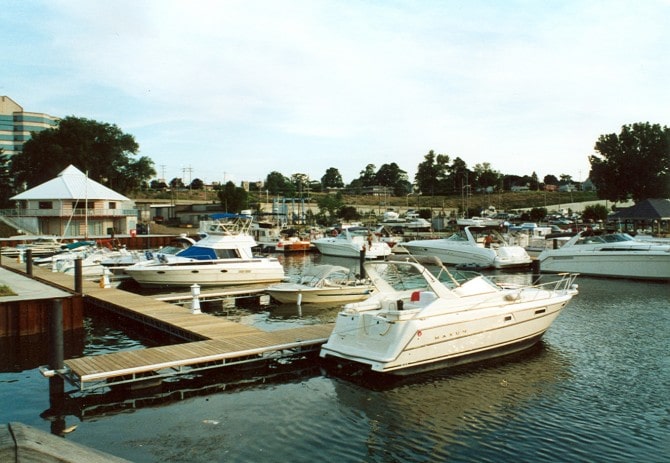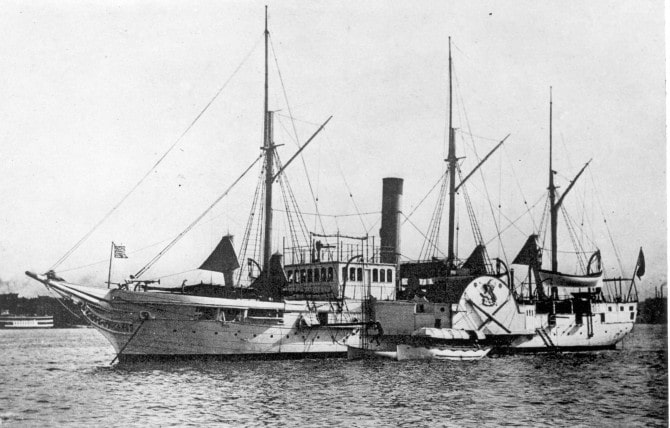
Amenities
- 30 AMP/50 AMP service
- Floating docks
- Water hookup
- Showers
- Laundry
- Security Gates
- Ship’s Store
Ship’s Store
- Basic supplies for boaters
- Convenience items
- Life Jackets
- T-shirts
- Nautical charts and books
- Towing memberships
The store and office are open from 8 am to 8 pm seven days a week through the end of October.
Location and Directions
Wolverine Park Marina is located at the corner of the Bayfront Parkway and State Street. Visiting boaters will be within walking distance of boat repairs and service stations, downtown Erie, the Maritime Museum and Brig Niagara, Dobbins Landing, and numerous restaurants/taverns.
By Land
From Airport
- Turn right onto 12th Street as you leave the Tom Ridge International Airport.
- Turn left on Greengarden Drive.
- Turn right onto the Bayfront Connector.
- Turn left onto State Street and Wolverine Park/Lakeshore Towing will be on the left.
From East
- Take Interstate 90 West to Interstate 79 North to Bayfront Parkway
- Wolverine Park/Lakeshore Towing is approximately 2.7 miles on the left.
From North
- Take Interstate 90 West to Interstate 79 North to Bayfront Parkway (approximately 2.7 miles).
- Turn left onto State Street.
- Wolverine Park/Lakeshore Towing is ahead on the left.
From West
- Take Interstate 90 East to Interstate 79 North to Bayfront Parkway (approximately 2.7 miles).
- Turn left onto State Street.
- Wolverine Park/Lakeshore towing is ahead on the left.
From South
- Take Interstate 79 North to the Bayfront Parkway (approximately 2.7 miles).
- Turn left onto State Street.
- Wolverine Park/Lakeshore Towing is ahead on the left.
By Sea
- Upon entering Presque Isle Bay, head west along the southern edge of the bay. Lookout for the Sheraton Hotel, and the large windowed convention center.
- Head through the channel between the convention center and the hotel, and under the skybridge (67 ft from the water).
- Upon entering the basin, make a left heading east. Wolverine Park Marina is in the southeast corner of the basin.

Within walking distance
- The Erie Maritime Museum and U.S. Brig Niagara showcases Erie’s rich maritime history and the important role Erie played in the War of 1812.
- Erie Bicentennial Tower provides a beautiful view of Presque Isle Bay.
- expERIEnce Children’s Museum offers hands-on learning and fun.
- ASCEND Erie Climbing Gym allows climbers of all skill levels to stretch their muscles.
- Downtown shops, boutiques, and galleries.
- Bars, restaurants, and nightlife in Erie's downtown and along the bayfront.
Close by
- Presque Isle State Park is a sandy peninsula offering beaches, canoeing, kayaking, hiking trails, biking, fishing, and Segways.
- Tom Ridge Environmental Center (TREC) has a Big Green Screen Movie Theater, exhibits, and a gift shop.
- Millcreek Mall Complex offers over 150 stores and restaurants.
- Waldameer Park and Water World has rides, attractions, and fun for everyone. No admission fee to park. Midway games, live shows, and delicious food.
- Splash Lagoon Indoor Water Park is home to the largest indoor wave pool in Eastern U.S., nine waterslides, Lazy River, hot tubs, pools, and Laser Tag.
- The Erie Zoo and Botanical Gardens is a beautiful place that is home to over 400 animals.
- Presque Isle Downs & Casino offers slot machines, table games and live horseracing.
- Kellar's, A Modern Magic and Comedy Club for a rousing good time.
- Erie Seawolves AA Baseball at UPMC Park.
Seasonal events
Erie is host to a variety of fairs, festivals performances, and concerts. For a complete listing of Erie County events go to VisitErie.com.

Conveniently located in Presque Isle Bay on Erie's bayfront, Wolverine Park Marina offers transient docking for boats of all sizes up to 100 feet in length. Both sheltered and floating options are available, with a host of modern amenities. Reservations are highly recommended, especially for weekend or extended visits during peak boating season. Call and reserve today at 814-874-0698
History of the Wolverine
The U.S.S. Wolverine was originally named U.S.S. Michigan.
U.S.S. Michigan was the first iron-hulled warship in the U.S. Navy and the first of her kind on the Great Lakes. Built in Pittsburgh and re-assembled in Erie, she was 167 feet long, displaced 450 tons, and was powered by side-paddlers and sails. Michigan provided a formidable and grand naval presence on the Great Lakes.
After the War of 1812, many Americans had continued to distrust British intentions in Canada and argued for continued military protection of the U.S. northern border. With the British sympathetic towards the Confederacy during the U.S. Civil War, those fears worsened. During the Civil War, U.S.S. Michigan guarded a prison camp for Confederate soldiers on Johnson’s Island, near Sandusky, Ohio. At one point, the Confederacy planned to capture Michigan and launch an attack on the Union from the north. The captain and the crew of Michigan discovered and foiled the plan.
In 1905, she was renamed U.S.S. Wolverine when a new battleship was commissioned as U.S.S. Michigan. During the 1913 Centenary commemoration of the Battle of Lake Erie, the Wolverine had the honor of towing the reconstructed Niagara around the Great Lakes in a grand patriotic celebration.
Despite the earlier personal pleas of President and former Navy man Franklin Delano Roosevelt, the U.S.S. Wolverine was scrapped in 1949 when local efforts to save her finally exhausted. Her prow, displayed but exposed to the weather on State Street in Erie, was saved from the scrapman’s torch.
On February 26th, 1998, the prow was moved to its new home on the First Mezzanine Level of the Erie Maritime Museum. The prow underwent an extensive restoration that included welding, scraping, painting, and refitting of her scrollwork. The Wolverine exhibit is certain to be popular with Erie residents, naval enthusiasts, and historians.
Credit: Flagship Niagara League


